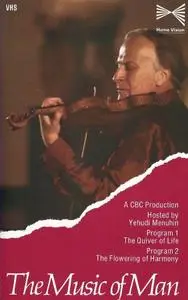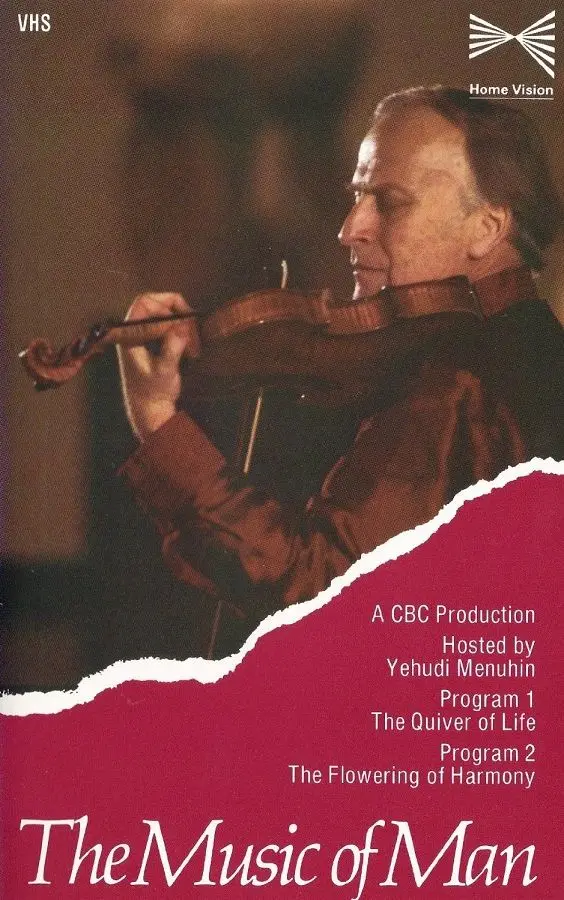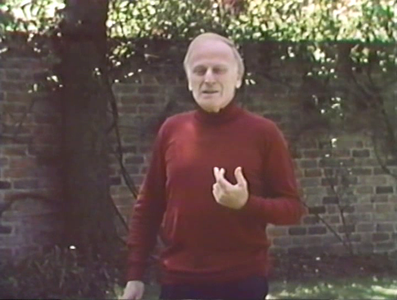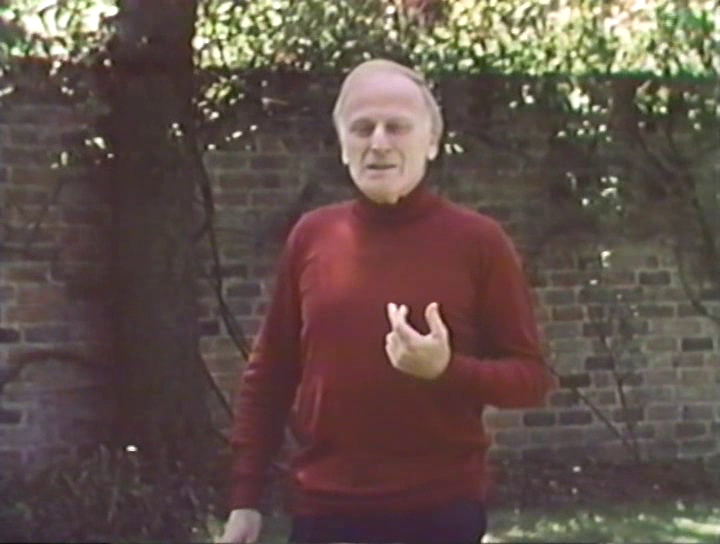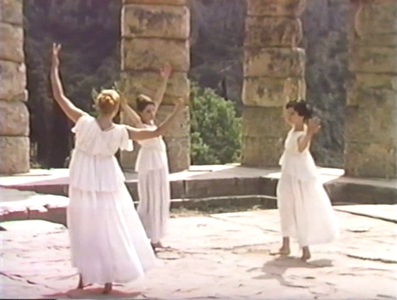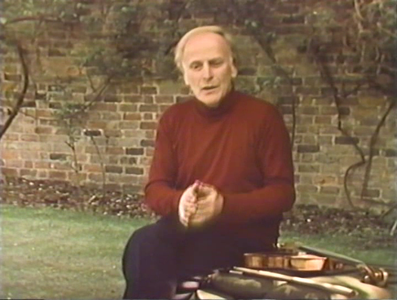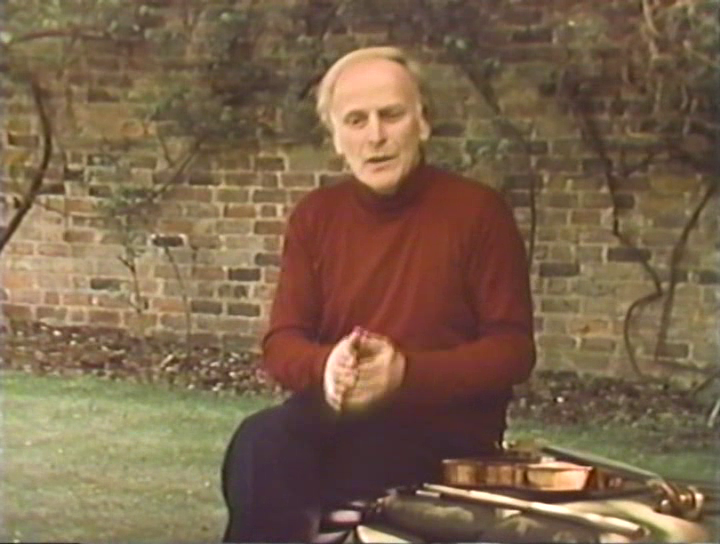CBC - The Music of Man (1979)
DVDRip | 720 x 544 | .AVI/XviD @ 1900 Kbps | 8x~57mn | 6.96 GB
Audio: English AC-3 256 Kbps, 2 channels | Subs: None
Genre: Documentary
DVDRip | 720 x 544 | .AVI/XviD @ 1900 Kbps | 8x~57mn | 6.96 GB
Audio: English AC-3 256 Kbps, 2 channels | Subs: None
Genre: Documentary
An exploration of the world's music. Yehudi Menuhin has created this expansive survey of musical traditions from five continents. With panoramic vision and infectious enthusiasm, he takes us from primeval rhythms of Africa to the symphonies of Beethoven, from plainsong to jazz, from Swiss yodeling to Irish jig, from steel drum to electronic synthesizer.
The Music of Man was a series of eight hour-long specials with host Yehudi Menuhin, following the development of music from its beginnings at the dawn of history to the electronic experiments, jazz and rock of our own time. Menuhin, the renowned violinist, conductor and humanist, participated both as violin soloist and conductor throughout the series, and was also co-writer. Filmed in locations around the world, The Music of Man was produced in English and in French. Composers ranged from improvising African tribesmen, Canadian Indians and Southern revivalists to Perotinus, Machaut, Gabrieli, Bach, Mozart, Beethoven, Wagner, Debussy and Bartok. Many famous artists from around the world participated, among them sitarist Ravi Shankar, violinist Jean Carignan, jazz pianist Oscar Peterson, contralto Maureen Forrester, composers Aaron Copland and Murray Schafer, and pianist and musicologist Glenn Gould. The films took five years to make, required two separate camera teams which travelled to 500 locations, and amassed more than 165 km of film.
Writers: Yehudi Menuhin, Curtis W. Davis, and Charles Weir.
Producers: Curtis W. Davis, Richard Bocking and John Thomson
Co-produced by CBC, the Ontario Educational Communications Authority, and the Mississippi Authority for Educational Television.
Part 1: The Quiver of Life
The first program tells how music began 35,000 years ago with hollowed-out animal bones. In India and China, music was a perfected art long before the birth of Christ. In the western world, music has only flowered in the past thousand years. Menuhin points to the basis of musical expression: man's sense of rhythm, first developed in the womb in response to the mother's heartbeat. Performing are Menuhin, Canadian composer Murray Schafer, jazz flutist Paul Horn, native singers and dancers from New Guinea, Senegal and Plains Cree Indians, Ukone of the Gwi people, Martha Takata of Syria, Abed Azrie, Nellie Karras Dancers, Greek singer Arda Mondikan, Ponti and Demotic Dancers of Greece.
Part 2: The Flowering of Harmony
With the growth of music from the Middle Ages to the Renaissance came a blending of many voices. Palestrina and Gabrielli are but two of the early composers featured. Yehudi Menuhin traces the development of vocal music and forms of musical notation from the chants of Buddhist monks to the massed choirs of the Renaissance. Also: Ravi Shankar discusses Indian music, in which ornamentation and melodic purity evolved in place of harmony.
Part 3: New Voices for Man
At the height of the Renaissance in Italy Monteverdi wrote the first opera, a form of entertainment instantly popular throughout Europe. Corelli created the sonata form and new instruments were developed. The development of musical instruments began to challenge the dominance of the human voice, and violin-making readied its finest form in Italy with Stradivari and Guarneri. Lully was the musical giant at the Court of Versailles. In England, Purcell was perhaps the first great modern composer and Handel brought works for voice of lasting inspiration. Performing are Accademia Monteverdiana conducted by Denis Stevens, Toronto Symphony Orchestra, George Malcolm, Robert Donington, Camerata Lysy, David Rubio, Maureen Forrester, Brighton Harnoncourt with Cathy Berberian and Franz Mazura, Victor Monge "Serranito," Bana and Chigaba Chisiko, Kelly Academy of Irish Dancing, members of the Munchner Symphoniker. Radio Orchestra Munich and the orchestra of the Munich State Opera, and Yehudi Menuhin.
Part 4: The Age of the Composer
The works of Vivaldi, Bach, Mozart, Haydn, Beethoven and Schubert established music as an accessible and popular art form in Western society. The program also examines J.S. Bach's exploration of the tempered scale, a method of tuning keyboard instruments that simplified the task of writing for a full orchestra.
Part 5: The Age of the Individual
The era of Western industrialization and the Romantic movement brought with it the grand piano and the huge symphony orchestra. Verdi, Brahms, Wagner and Tchaikovsky each put their unique stamp on Western music. National Ballet of Canada stars Karen Kain and Frank Augustyn dance the Swan Lake pas de deux to Tchaikovsky's music played by violinist Yehudi Menuhin.
Part 6: The Parting of the Ways
During the pre-World War I era the music of Stephen Foster, Scott Joplin and John Philip Sousa influenced the popular musical tastes of America. Abroad Debussy, Strauss and Mahler filled concert halls, while Igor Stravinsky advanced the revolution with The Rite of Spring. With the dawn of the 20th century, the audio recording was invented. In contrast with the sophisticated and impressionistic music of Europe, American music at the turn of the century was influenced by African rhythms and melodies which produced the blues, spirituals, minstrel shows and ragtime. These new musical forms were popularized by the advent of motion pictures.
Part 7: The Known and the Unknown
Between the two World Wars the pace of life quickened. Jazz became enormously popular in both Europe and America. In classical music, Aaron Copland and Arnold Schoenberg opened new horizons. Radio and sound movies popularized all forms of music, from Toscanini to Big Bands.
After World War I, Schoenburg introduced the 12-tone system, as revolutionary a step as Bach's tempering of the eight-tone scale had been. The dissonant new music that he made possible was not readily embraced by North American listeners, who were beginning to accept jazz-influenced swing music and the purer symphonic sounds of film scores and radio. Highlights include Schoenburg's Suite for Piano, Op. 25, footage of a 1934 Louis Armstrong performance of "Tiger Rag," George Gershwin's "I Got Rhythm," and Rossini's "William Tell Overture."
Part 8: Sound or Unsound
The post-war exploration of music, impelled by the LP, the transistor radio and the television, has taken Western music beyond early jazz into folk, rock and electronic music. Yet as old rules are questioned, man clings to the forms of music that will always remain rooted in the deepest instincts of his nature.
Yehudi Menuhin examines the divergent trends in music following World War II: Bela Bartok's arrangements of traditional folk tunes; Oscar Peterson's jazz improvisations; John Cage's exploration of random sound; and the Beatles' impact as "pop idols" on an entire generation.
General
Complete name : CBC.The.Music.of.Man.1of8.The.Quiver.of.Life.avi
Format : AVI
Format/Info : Audio Video Interleave
File size : 891 MiB
Duration : 57 min 31 s
Overall bit rate : 2 165 kb/s
Movie name : CBC.The.Music.of.Man.1of8.The.Quiver.of.Life.MVGroup.org.avi
Writing application : VirtualDubMod 1.5.10.2 (build 2542/release)
Writing library : VirtualDubMod build 2542/release
Video
ID : 0
Format : MPEG-4 Visual
Format profile : Advanced Simple@L5
Format settings, BVOP : 2
Format settings, QPel : Yes
Format settings, GMC : 3 warppoints
Format settings, Matrix : Default (H.263)
Codec ID : XVID
Codec ID/Hint : XviD
Duration : 57 min 31 s
Bit rate : 1 900 kb/s
Width : 720 pixels
Height : 544 pixels
Display aspect ratio : 4:3
Frame rate : 25.000 FPS
Color space : YUV
Chroma subsampling : 4:2:0
Bit depth : 8 bits
Scan type : Progressive
Compression mode : Lossy
Bits/(Pixel*Frame) : 0.194
Stream size : 782 MiB (88%)
Writing library : XviD 1.2.1 (UTC 2008-12-04)
Audio
ID : 1
Format : AC-3
Format/Info : Audio Coding 3
Format settings, Endianness : Big
Codec ID : 2000
Duration : 57 min 31 s
Bit rate mode : Constant
Bit rate : 256 kb/s
Channel(s) : 2 channels
Channel positions : Front: L R
Sampling rate : 48.0 kHz
Frame rate : 31.250 FPS (1536 spf)
Bit depth : 16 bits
Compression mode : Lossy
Stream size : 105 MiB (12%)
Alignment : Split accross interleaves
Interleave, duration : 40 ms (1.00 video frame)
Interleave, preload duration : 500 ms
Service kind : Complete Main
Complete name : CBC.The.Music.of.Man.1of8.The.Quiver.of.Life.avi
Format : AVI
Format/Info : Audio Video Interleave
File size : 891 MiB
Duration : 57 min 31 s
Overall bit rate : 2 165 kb/s
Movie name : CBC.The.Music.of.Man.1of8.The.Quiver.of.Life.MVGroup.org.avi
Writing application : VirtualDubMod 1.5.10.2 (build 2542/release)
Writing library : VirtualDubMod build 2542/release
Video
ID : 0
Format : MPEG-4 Visual
Format profile : Advanced Simple@L5
Format settings, BVOP : 2
Format settings, QPel : Yes
Format settings, GMC : 3 warppoints
Format settings, Matrix : Default (H.263)
Codec ID : XVID
Codec ID/Hint : XviD
Duration : 57 min 31 s
Bit rate : 1 900 kb/s
Width : 720 pixels
Height : 544 pixels
Display aspect ratio : 4:3
Frame rate : 25.000 FPS
Color space : YUV
Chroma subsampling : 4:2:0
Bit depth : 8 bits
Scan type : Progressive
Compression mode : Lossy
Bits/(Pixel*Frame) : 0.194
Stream size : 782 MiB (88%)
Writing library : XviD 1.2.1 (UTC 2008-12-04)
Audio
ID : 1
Format : AC-3
Format/Info : Audio Coding 3
Format settings, Endianness : Big
Codec ID : 2000
Duration : 57 min 31 s
Bit rate mode : Constant
Bit rate : 256 kb/s
Channel(s) : 2 channels
Channel positions : Front: L R
Sampling rate : 48.0 kHz
Frame rate : 31.250 FPS (1536 spf)
Bit depth : 16 bits
Compression mode : Lossy
Stream size : 105 MiB (12%)
Alignment : Split accross interleaves
Interleave, duration : 40 ms (1.00 video frame)
Interleave, preload duration : 500 ms
Service kind : Complete Main
Screenshots
Welcome to my blog - daily update!


